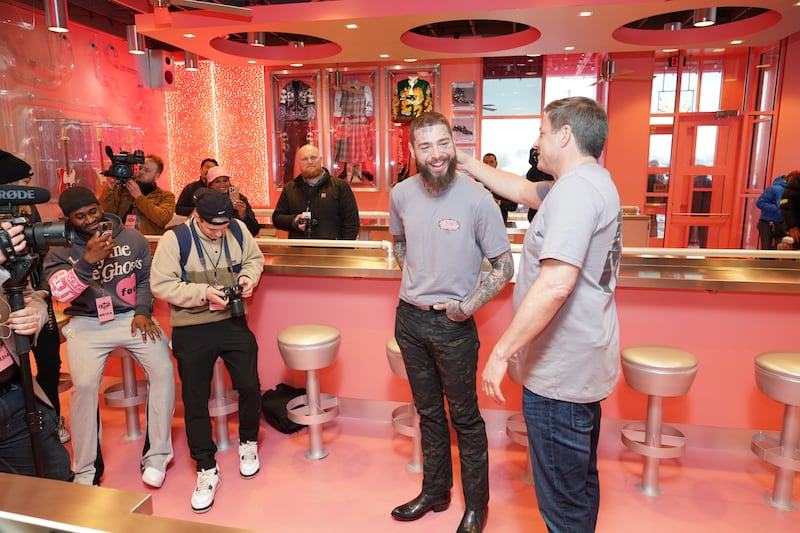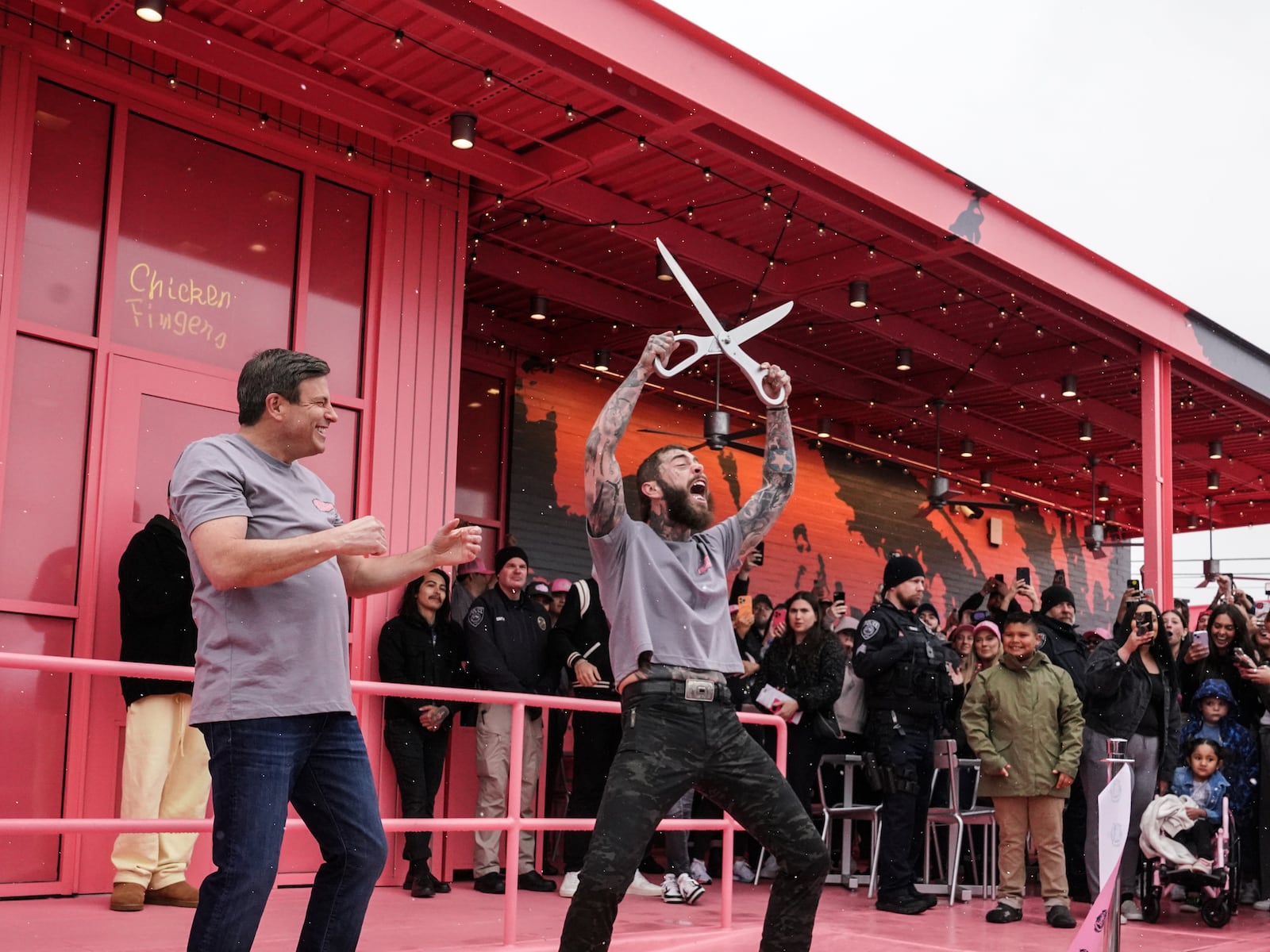This story appears in the July 2025 issue of Utah Business. Subscribe.
In April 2017, a group of protesters squared off against a line of police officers. Tensions were mounting. Would this turn into yet another of that era’s violent clashes?
Thankfully, Kendall Jenner ended the stand-off, not with persuasion but with a Pepsi.
In a now-infamous commercial, Jenner, a symbol of great privilege, cut through all the layers of complexity by handing a carbonated beverage to a cop as the protesters cheered. That cheering was soon thoroughly drowned out by public backlash, and the ad disappeared within 24 hours.
Pepsi had tried to use Jenner to inauthentically force the energy of an authentic social movement into a bottle far too small to accommodate it, and both paid the price in dollars and brand equity.
Seven years later, Jenner’s mother, Kris, partnered with Utah-based Cozy Earth, a luxury loungewear brand known for its bamboo pajamas and ultrasoft bedding. There were no protests. No police. Just an Instagram story featuring the matriarch in her element: sharing promo codes with her 50 million followers while wearing pajamas and sipping tea. Cozy Earth sales increased significantly, and the elder Jenner’s brand was bolstered.
When celebrities partner with consumer brands, the relationships can either implode or explode. What makes the difference has less to do with fame and followers and more to do with factors that are difficult to measure: authenticity, culture fit and the delicate calculus of risk.
Cozy Earth x Kris Jenner
For the first half of his 15 years in business, Cozy Earth founder and CEO Tyler Howells promoted his brand the hard way: one trade show at a time. The company’s first celebrity partnership wasn’t even planned.
“When we started actually marketing, Oprah Winfrey heard of our company, tried out our sheets herself and fell in love with them,” recalls McKoy Molyneaux, head of strategic partnerships at Cozy Earth. “Oprah included Cozy Earth in her Favorite Things, and that really put us on the map.”
Much of what makes Oprah’s Favorite Things so influential is the fact that inclusion can’t be bought. Cozy Earth products have found their way onto that list for seven years running, and because Oprah found and loved the brand on her own, there was never any doubt that the connection was an authentic one. Molyneaux says the same principle applies to compensated partnerships.
“Kris Jenner was a Cozy Earth fan first, so it wasn’t as though we were gambling on someone who might or might not resonate,” he says. “It was a true extension of something that was already happening organically.”

Raising Cane’s x Post Malone
Raising Cane’s Chicken Fingers is a Louisiana-based restaurant chain that’s partnered with Utah transplant Post Malone. As part of the deal, Malone designed two of the chain’s locations, including one in Utah.
Considering that Raising Cane’s operates almost 1,000 units, that may sound like a gimmick, but one look at the Malone-designed Midvale location should put that idea to rest. Whereas a typical Raising Cane’s follows a consistent industrial-chic aesthetic founded in brick, stucco and lots of windows, the Midvale total takeover’s style is part Post Malone and part post-apocalypse — nearly windowless, painted hot pink and accented by black replicas of Malone’s tattoos.
What makes that pairing work is “authenticity and genuine love for the brand,” Raising Cane’s CMO Kim Freer says. “When a partnership is formed from a true, genuine love for the brand, consumers can feel that, and the partnership just makes sense.”
Freer explains that Malone and Raising Cane’s CEO Todd Graves are longtime friends. When Graves learned that, at the time, the nearest Raising Cane’s was an hour away from Malone’s Cottonwood Heights home, the decision was made to build in Midvale, shortening the drive significantly.
“Post had full autonomy over the look and feel of the restaurant,” Freer says. “It’s our only pink restaurant, which is proof he certainly could have painted it black and lime green if he wanted! We wanted it to be reflective of him as an artist and his personal interests and passions, hence the ping pong ball track system that runs throughout the interior, the showcase of past outfits from his tours and music videos, some of his old guitars, and more.”
Hash Kitchen x Lisa Barlow
Hash Kitchen is a trendy brunch place with a pair of Utah locations, including one in Draper. While brainstorming ways to raise awareness of the newly arrived brand, a collaboration with “Real Housewives of Salt Lake City” was proposed.
“I remembered that Lisa Barlow has the iconic catchphrase: ‘baby gorgeous.’ One of Hash Kitchen’s taglines is ‘Hash Hash Baby,’ so we thought it would be nice to connect the two worlds and create the Baby Gorgeous cocktail with Lisa Barlow’s tequila,” says Briana Stewart, director of public relations for Hash Kitchen investor Savory Fund. “Lisa lives in Draper and is one of our key demographics, so it was all very authentic.”
Where most celebrity collaborations involve a lot of attorneys, Hash Kitchen and Barlow’s was founded on a handshake.
“Influencer and celebrity marketing has all become very contractual,” Stewart says. “But this is just good old-fashioned synergy, and it’s fun to see two businesses agreeing to support each other in a way that feels and is organic.”

Focus on the cultural fit
The most successful consumer brands connect with their market on many levels, including shared values. When the face of a brand represents a different set of values, the result is culture misalignment.
“It’s important to evaluate a potential celebrity partnership based on how they align with the company’s values and how they will represent the brand. With Post, he’s a likeable, jovial guy with a loyal following and positive sentiment within the entertainment community. That, partnered with his love for Cane’s and the general momentum and power behind his name, made the partnership a no-brainer,” Freer says.
Molyneaux says Cozy Earth and Jenner’s shared values of quality, sustainability and wellness overlap seamlessly.
“Influencers tend to be polarizing, but it’s only a problem if their values aren’t aligned with the brand they’re partnering with. When that happens, it’s a problem for both parties,” McKenzie Bauer, co-founder of Thread Wallets, says. Bauer is known for working tenaciously to get her products into the hands of celebrities. “It doesn’t matter how famous a person is, I’d rather never see our product being used by someone whose values run contrary to ours.”
Handle with caution
Most celebrities become polarizing because they’re famous, while others become famous because they’re polarizing. Either way, fame attracts haters and nonstop scrutiny, increasing the risk that slip-ups will draw excess attention to the individual and their partnerships.
Cozy Earth was in the early stages of negotiating its partnership with Kris Jenner when devastating accusations of a potentially Kardashian-adjacent celebrity broke.
Molyneaux says his team held internal conversations on how to proceed, but concluded that the value Jenner brought to the brand, combined with what they knew about her family’s sense of propriety, made moving ahead with the deal well worth the risk.
Barlow’s history of good judgment worked in her favor as well.
“We’re five years into ‘Real Housewives’ and there have been a lot of scandals, including castmate Jen Shah going to prison,” Stewart says. “But we’ve known and watched Lisa the whole time, and we knew a partnership with her was all upside.”
“It used to be that advertising on [Instagram and Facebook owner] Meta was how it was done, but that’s slowly changing. Meta is not as impactful anymore. Brands were trying to find what’s next; that’s how celebrity endorsements became the big thing. Now we’re all asking, ‘Is this it? Is this how we do it now?’ It is until it’s not, and we have to find the next thing.”
— McKoy Molyneaux
In the case of Raising Cane’s, the Post Malone risk conversation was a short one.
“Based on the viral nature of social media and the close eye media and fans keep on celebrities, there are always risks when you’re partnering with someone. There will always be a negative comment or two about any celebrity figure, so it’s important to determine the level of risk your brand is comfortable with and evaluate from there,” Freer says. “At the end of the day, you have to trust your celebrity partners. Post is a great guy and a well-respected artist who has a genuine love for Cane’s. We knew he would be an excellent partner.”
“Brands are taking on risk, but celebrities are as well,” Molyneaux says. That’s what a partnership is: both parties having trust and knowing their values and qualities are aligned.”
Glitz and glory
During the early rise of social platforms — before the concept of influencer marketing even existed — those with large audiences endorsed products in the Oprah style of “just because.”
That’s not how it works anymore.
While compensation can take on many forms, it’s now less a novel side effect of influence and more a cylinder of the engine driving it. Incentivizing the creation of algorithm-pleasing content boosts user engagement and, in turn, attracts advertisers.
Brand partnerships with celebrity influencers have become established enough to justify job titles like Molyneaux’s, but fundamental standards — like how compensation is handled — still lack definition.
“Some companies pay in equity. Others offer flat fees or commissions. There’s still no typical way to execute a partnership. It feels like the wild west,” Molyneaux says.
The agreement between Post Malone and Raising Cane’s is multifaceted and includes royalties on sales at the Midvale location, a collector’s cup campaign, a charitable poster campaign, tour-supporting merch pop-ups, and the transport of the vintage Ford F-100 featured on Malone’s most recent album cover from Nashville to Midvale.
However, while companies attempt to establish consistent approaches to celebrity partnerships, the target continues moving. As effective as social media-fueled celebrity partnerships are today, it’s naïve to presume they always will be, much less that their replacement can be predicted.
“It keeps changing every day,” Molyneaux says. “It used to be that advertising on [Instagram and Facebook owner] Meta was how it was done, but that’s slowly changing. Meta is not as impactful anymore. Brands were trying to find what’s next; that’s how celebrity endorsements became the big thing. Now we’re all asking, ‘Is this it? Is this how we do it now?’ It is until it’s not, and we have to find the next thing.”
Just as there is no set formula for achieving virality online, there is no formula for brands looking to form effective celebrity partnerships, other than this: start with authenticity, demand culture fit and remain open to letting the relationship become what it will. The outcome may be a tequila cocktail named with a wink or a pink fever dream of a restaurant that ignores the core principles of eatery esthetics and succeeds anyway. As platforms shift and strategies evolve, the most effective partnerships will be the ones that feel less like marketing plays and more like old friends finishing each other’s sentences.

